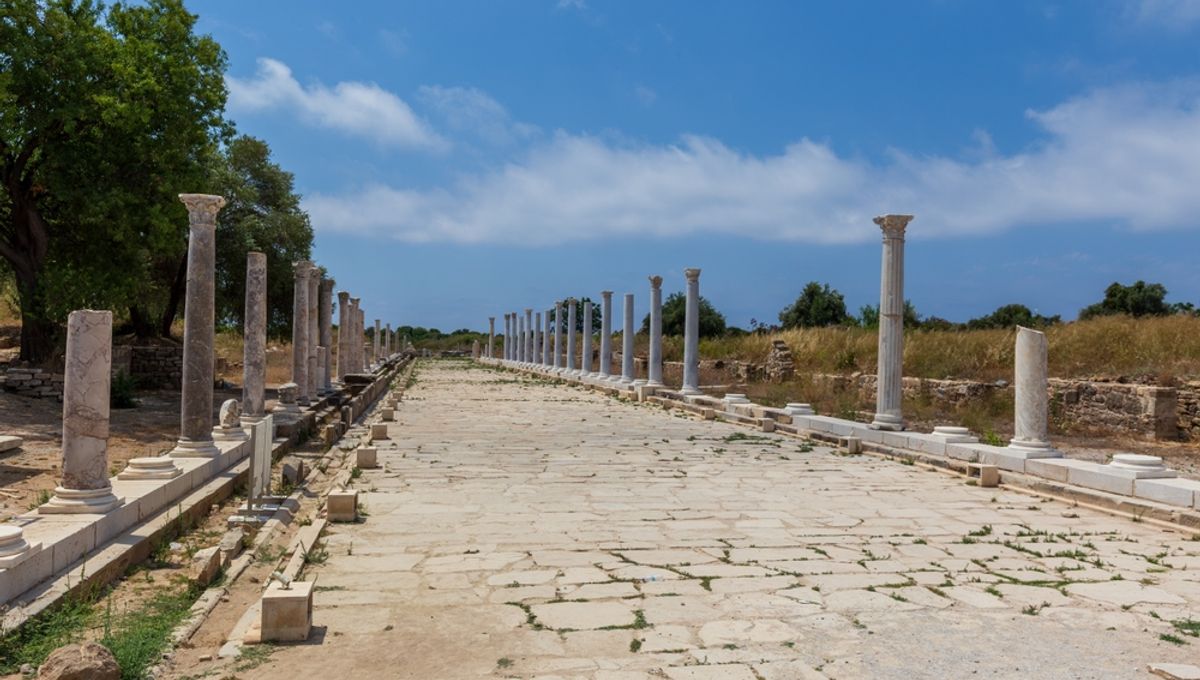
History is full of crummy times. Flip to any chapter in the human story, and you’ll find that peace and prosperity are the exception, not the norm. Sure, periods of plenty and politeness have been enjoyed, but they often came crashing down in an outbreak of violence or, if you were lucky, they slowly rotted away into obscurity. However, of all the times to be alive, one year is particularly prominent in the history of misery: 536 CE.
Nobody is completely certain which volcano was responsible, although El Salvador’s Ilopango has long stood as a top contender. However, a study in 2018 put forward evidence that the eruption was in Iceland, as ice cores in Europe contain volcanic glass that’s chemically similar to particles found across Europe and Greenland. It is also possible that the so-called “volcanic winter” was actually triggered by an unfortunate series of explosive eruptions around 536 to 540 CE.
Whatever the volcanic culprit, its effects were dramatic. In a letter written in 538 CE, Roman statesman Cassiodorus wrote: “Men are alarmed, and naturally alarmed, at the extraordinary signs in the heavens, and ask with anxious hearts what events these may portend. The Sun, first of stars, seems to have lost his wonted light and appears of a bluish color.”
“We marvel to see no shadows of our bodies at noon, to feel the mighty vigour of his heat waste into feebleness […] The Moon, too, even when her orb is fuelled, is empty of her natural splendour.”
Procopius, a Byzantine historian living in the Middle East at the time, also wrote of “dread” caused by a foggy eclipse of the Sun.
There’s plenty of physical, scientific evidence of this phenomenon, too. Trees cut down in Denmark show extremely narrow growth rings during the mid-sixth century due to “drastic climate changes” that occurred in 536 CE, while ice cores from Greenland and Antarctica highlight evidence that the atmosphere was clogged with an “extensive atmospheric acidic dust veil” during this time.
Amid the darkness, temperatures plummeted in the Northern Hemisphere and agriculture collapsed. Scholars believe the eruptions of 536 CE may have been linked to the start of the Late Antique Little Ice Age, which started that very year and was consolidated by more eruptions around 540 and 547 CE.
Summer temperatures around the world fell by several degrees, and Earth’s climate was profoundly shaken up. Snow fell during the summer in China, droughts hit South America, and the deathly fog in the sky was fretted about in the Middle East.
Inevitably, famine and misery quickly followed. Gaelic Irish annals talk of “a failure of bread in the year 536 [CE],” while bubonic plague swept through the Roman port of Pelusium in Egypt.
This was nearly 1,500 years ago, so we don’t have the benefit of social media to chronicle the entire world’s angst, nor even much direct documentation, but many historians agree that the year 536 CE marked the beginning of a particularly grim chapter in human history, at least in some regions of the world.
In Europe and parts of Asia, the year 536 CE “was the beginning of one of the worst periods to be alive, if not the worst year,” Michael McCormick, a medieval historian and archaeologist who chairs the Harvard University Initiative for the Science of the Human Past, told Science in 2018.
Within five years of the onset of the Late Antique Little Ice Age, the Justinianic plague pandemic swept through the Mediterranean. Constantinople, the heart of the Eastern Roman (Byzantine) Empire, was especially hard-hit and millions of people perished over the following decades. While multiple factors contributed to the empire’s eventual collapse many centuries later, some scholars argue that this deadly combination of climate disaster and pandemic played a pivotal role in ending its glory days.
The ripple effects extended far beyond the Mediterranean. In the cooler, drier conditions of central Asia, dwindling pastureland forced several nomadic tribes to migrate eastward toward China. This movement sparked clashes between these migrating groups and local powers in the steppe regions of northern China. In a surprising twist, some of these steppe tribes later formed alliances with the Eastern Roman Empire. Together, they helped bring down the Sasanian Empire in Persia.
However, perhaps the volcanic winter of 536 CE wasn’t such bad news for other parts of the world. As the Eastern Roman Empire and Sasanian Empire suffered, the Arabian Peninsula became blessed with more rain.
With the old empires in trouble, the Arabian Peninsula – now slightly greener than in previous centuries – was poised to become the stage for a new power to rise. And rise it did. Amid many other factors, the Arab Empire sprang onto the world stage by the seventh century CE, rapidly becoming one of the most powerful and influential forces in history.
An earlier version of this story was published in 2018.
Source Link: Why Was The Year 536 CE A Truly Terrible Time To Be Alive?